Hyperpigmentation is the darkening of patches of skin due the production of excess melanin, the pigment that gives skin its colour. It can affect anyone, but it is more common on darker-skin types, as they already have a higher melanin content. Burns, bruises, acne, rashes, or other trauma can cause the production of more melanin and lead to dark spots. Types of hyperpigmentation include freckles, age spots, melasma and post-inflammatory hyperpigmentation.
The most common causes are sun exposure without proper protection and hormone imbalances, including those provoked by birth control pills. On rare cases, extra pigmentation can indicate a serious medical condition, such as Addison’s disease or hemochromatosis.
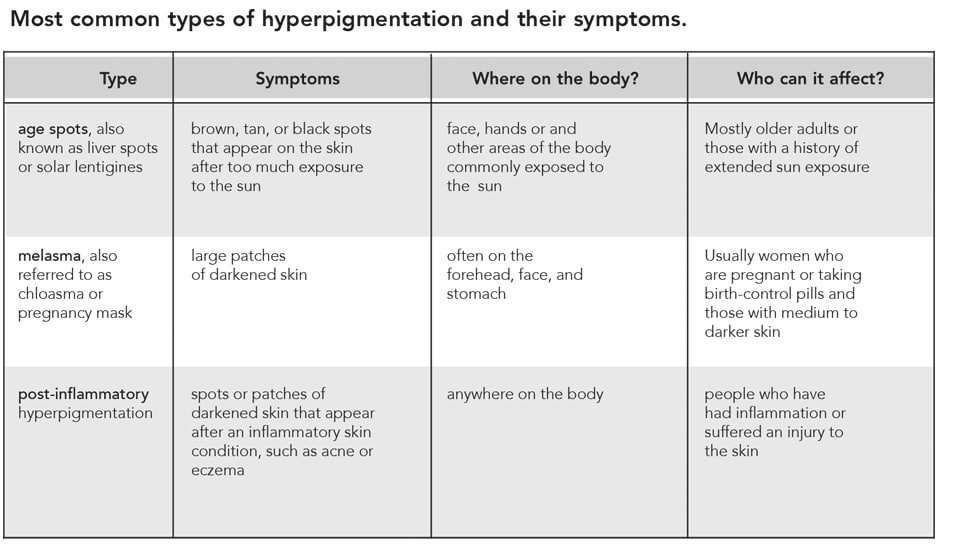
Dr Georges Roman, one of the top practitioners in the UK and Middle East, explains how finding the cause of the dark spots is very important before deciding which treatment to follow. Melasma affects women much more often than men and remains a significant cause of cosmetic morbidity and psychosocial embarrassment. “I work a lot in the Middle East,” he shares, “so I often deal a lot with darker skin tones than European Caucasian. There are a lot of treatment possibilities for melasma, but the best attitude is to not start with anything too aggressive as it could have a ‘rebound’ effect and worsen the condition, leaving it with less possibilities to be treated.”
“To treat melasma the best is to not start with anything too aggressive as it could have a ‘rebound’ effect and worsen the condition, leaving it with less possibilities to be treated.”
– Dr Georges Roman

If the hyperpigmentation is post-inflammatory, Dr Roman warns that “one has to be very careful with how to treat it. The most important thing is to find and treat the cause of the inflammation and ideally, to prevent it post-treatment.” In the last few years intensive medical research has led to the development of very good solutions to help patients. For example, Dr Roman uses a whitening mask that reduces clusters of darkened skin cells and prevents the appearance of new ones. The main objective of the treatment is to inhibit the proliferation of melanocytes, formation of melanosomes (where melanin pigments are stored) and advance their degradation.
The best way to avoid hyperpigmentation is prevention. Faye Purcell, Development Chemist and Skincare Expert at Q+A says that the best you can do is to “protect your skin from UV rays by wearing a sunscreen with a good SPF factor and covering it when possible. As we have known for a while, UV damage can happen even on cloudy days, so regular application of sunscreen to any uncovered skin is essential to avoid discolouration.”
Sandro Allenbach, Training Manager at Sensai also puts an emphasis on prevention. “Protecting the skin every day from UV rays is the best you can do when wishing to have a more even complexion. It’s recommended to avoid UV rays as much as possible, as it is a normal process when already having spots, that they will appear more when coming in contact with UV rays, even using a correcting or preventing product.”
Another bad habit that leads to darkened patches of skin is the popping and picking of spots and scabs. When a blemish is repeatedly opened or irritated,” warns Purcell, “you are at a higher risk of a dark mark forming in its place when it finally heals. The same advice goes for other skin damage, such as dry or peeling patches; always try to stick with skincare that boosts repair to avoid hyperpigmentation.”
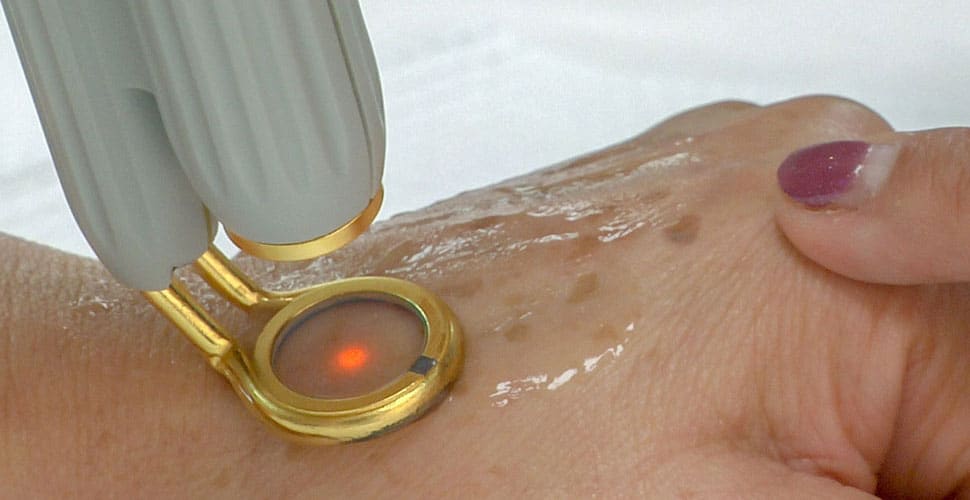
Age spots can be improve by treating them with specialised lasers.
Medical therapies remain mainstay in the management of melasma. “The triple combination of hydroquinone four percent, tretinoin 0.05 percent and fluocinolone acetonide 0.01 percent remains the only US FDA-approved treatment for melasma and is the gold standard due its demonstrated efficacy across ethnicities,” explains Dr Roman, “Several cosmeceuticals and botanical extracts have been demonstrated to be helpful by either lightening the affected skin or by encouraging its regeneration. And sunscreens containing zinc oxide, iron oxide, titanium dioxide, and silicones provide protection and are indispensable post-treatment. A multimodality approach is the most effective treatment.” Ingredients found in this kind of products, which have proved to help lighten the skin include:
Azelaic acid: a naturally occurring acid found in grains such as barley, wheat, and rye. It
has antimicrobial and anti-inflammatory properties, which make it effective in the treatment of skin conditions such as acne and rosacea that lead to the darkening of the skin. Azelaic acid can help minimise the formation of discoloured pigments.
Cysteamine cream: highly effective to remove brown spots, reduce pigmentation marks and treat melasma, leaving a natural light skin complexion. Cysteamine is found naturally in human cells and reduces melanin in the skin epidermis.
Vitamin C: protects skin cells from free radicals and inhibits melanin production, which helps to ease hyperpigmentation and brown spots. Vitamin C helps to even skin tone and improve radiance. It also plays a critical role in the synthesis of collagen and in wound healing.
Hydroquinone: is a chemical that bleaches the skin. It can come as a cream, emulsion, gel, or lotion. Applied to the skin, it reduces the number of melanocytes, which means less melanin being produced in the treated area. The skin usually appears lighter within about four weeks. Exposure to sunlight reverses the effects of hydroquinone. Doctors strongly recommend that people who use this product also use a high SPF sunscreen.
Kojic acid: is a chemical produced from different types of fungi. It is also a by-product of fermented soy sauce and rice wine. It works by blocking tyrosine from forming, which then prevents melanin production.
Retinoids: such as tretinoin are a group of compounds that derive from vitamin A. Among their many applications, they act on the cells that produce skin pigments to help reduce discolouration produced by melasma or actinic lentigines.
Arbutin: is a derivative of hydroquinone that acts on the melanin pathway by suppressing the activity of tyrosinase, an enzyme important in melanin production.
Mequinol: is a substrate of the enzyme tyrosinase, which acts as a competitive inhibitor that halts melanin production. It is commonly used as an alternative to hydroquinone in the treatment of hyperpigmentation.
Niacinamide: a form of Vitamin B3, this compound can interrupt the transfer of melanosomes, which store and transport melanin to your skin cells. Regular use of a product containing niacinamide can help to reduce the appearance and severity of hyperpigmentation.
N-acetyl glucosamine: a monosaccharide derivative of glucose with several functions in the body, the most important of which is its combination with glucuronic acid, which forms a compound we’re all more familiar with, hyaluronic acid. Apart from its anti-ageing properties, hyaluronic acid can help reduce the production of melanin through tyrosinase inhibition and therefore hyperpigmentation due to UV skin damage.
Plant-based treatments are showing promising results against hyperpigmentation, in particular those with soy, which work by inhibiting melanin from collecting in the top layer of skin, and therefore preventing uneven skin tone; aloe vera, as aloesin, a compound present in it, may lighten hyperpigmentation by inhibiting the production of melanin; good old liquorice, whose extract glabridin can have anti-inflammatory, antioxidant and skin-whitening effects; and last, some research suggests that green tea extracts can improve melasma and reduce the effects of sunburn.
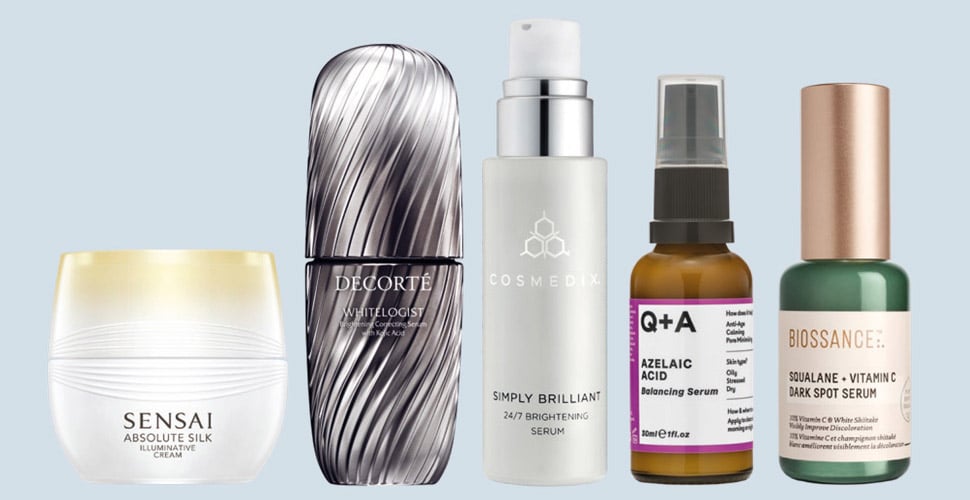
There are so many products in the market containing the above compounds that it could have taken us years to test them all. Instead, we have made a selection based on those tried by members of the I-M Intelligent Magazine team over two months and which showed more tangible and promising results:
Q+A Azelaic Acid Balancing Serum (£9) blends 8 percent azelaic acid, zinc PCA and four super grain extracts that help improve skin tone, texture, and give a more even complexion. qandaskin.com
Biossance Squalane + Vitamin C Dark Spot (£48.00) is a serum which features a proprietary white shiitake mushroom extract blended with the brand’s uniquely stable form of vitamin C, which visibly fades dark spots, and prevents new ones from forming. biossance.com
Kalonology’s Advanced Skin Recovery Serum with Vitamin C & E (£85.50) works particularly well on skins that have suffered hyperpigmentation due to sun damage, burns, acne or scarring, as it normalises sebaceous secretions and protects from further aggressors. This serum also contains Astaxanthin, a powerful antioxidant considered 65 times more powerful than ascorbic Acid, 800 times more efficient than Co-Q10 in recycling vitamin C and 550 times more powerful than green tea extracts. www.kalonology.com
Decorté’s Whitelogist Brightening Correcting Serum (£126) contains a purified biotech fermentation of Koji and a proprietary Bright Concentrate Complex, a potent antioxidant, that helps protect and prevent future discoloration. This lightweight, deep-penetrating serum helps reveal a brighter, more translucent and hydrated glow. www.decortecosmetics.co.uk
Sensai’s Absolute Silk Illuminative Cream (£160) contains niacinamide and Koishimaru Silk RoyalTMIL, the original Sensai moisturising ingredient, which, combined, help prevent the appearance of spots by inhibiting melanin transport at the source from melanocytes to epidermal cells. As it also helps to soften wrinkles, the whole complexion overall appears more even. Sensai recommends using Micro Mousse Treatment (£145) as a lotion before its Illuminative Cream. www.sensai-cosmetics.com
Cosmedix Simply Brilliant 24/7 Brightening Serum (£62.00) doesn’t use standard anti-pigmentation compounds such as hydroquinone or arbutin. Instead, it contains 10 skin-specific brightening ingredients such as whitonyl and waltheria, plus L-lactic and salicylic acid, all of which improve the appearance of hyperpigmented and photodamaged skin, brightening it and preventing future discolouration. cosmedicskincare.co.uk
Among the most common clinical treatments, we find laser therapy, intense pulsed light, chemical peels, cosmetic acupuncture and micro-needling. However, the evidence for the efficacy of chemical peels, laser and light therapy is limited – and Dr Roman adds – “they can cause post-inflammatory hyperpigmentation, particularly in individuals with darker skin types“. The chemical peels he applies in his clinic are tailor-made to the skin type of the patient and contain different combinations of citric, salicylic, phytic, glycolic and trichloracetic acid, or Jessner’s solution. However, he warns that these are not viable for all types of skin. “We grade skin from Type 1 to Type 6 – Fitzpatrick scale – and depending on the score, we can apply certain treatments or not. Skins that score four or over don’t respond well to chemical peels and the results can be counterproductive.”

Acupuncture needles start at 7mm length, which is longer than the skin depth (fascial skin has a thickness of approximately 1-2mm).
Cosmetic Acupuncturist Athena Giralea explains, “Pigmentation is made of melanocytes and harder types of collagen (like Type II & III). Healthy skin contains Type I collagen. Through controlled skin injury (like microneedling and cosmetic acupuncture), it is possible to replace Type II and Type III collagen with Type I.” The technique of medical micro-needling has been shown to increase the remodelling of the skin by creating thousands of microscopic channels through it. Needling initiates electrical depolarisation in the tissue, which, in turn, initiates a change on the cellular level known as the wound healing cascade. As a result, collagen, hyaluronic acid and growth factors are naturally produced in the body to heal the micro-injuries produced by needling. During treatment, Giralea uses serums with growth factors and peptides that target pigmentation. “Microneedling improves the effectiveness of creams and serums that are applied afterwards by around 1,000 times because it allows the skin to absorb up to 90-95 percent of the active substances in topical serums,” she shares. Giralea explains further: “When the pigmentation is chronic and thick, cosmetic acupuncture is likely to work better as it’s easier to injure it with a single needle, whilst the microneedling device wouldn’t be able to puncture through it. Additionally, needling on the acupuncture points can target the underlying causes of pigmentation, such as hormonal imbalances or acne.”
“Micro-needing and cosmetic acupuncture reach deeper layers of the skin than many other treatments and as a result, can affect deeper pigmentation.”
– Athena Giralea
After gathering all this information, I still have some questions about these treatments. For example, when you apply any of these products, will all the skin get lighter? And if so, will then the patches that were initially darker still look darker than the surrounding skin? Talking to an expert at Decorté, the manufacturers of the Whitelogist range, he said: “Whitelogist can not only suppress the production of melanin, but it can also help pulverise melanocore (melanin conglomeration) and expel melanin. Thus, it can help the bits that were darker to start with get close to the brightness of other parts of skin.” The other pressing question in my mind is about exposure to sun. Could I tan again after all that melanin suppression? Would I automatically burn? The same expert at Decorté explains: “Since Whitelogist will suppress the production of melanin, we do not recommend using it when you want to get a tan (but since there is a limit in the suppression effect, it does not mean that you won’t get a tan at all when using this product). However, this suppression is not permanent and will stop after you finish using this product. Thus, it does not mean that once you use Whitelogist you won’t tan at all in the future.”
If you suffer from pigmentation issues on your skin and are undecided about which products or treatments are best for you, I recommend you ask an expert such as Dr George Roman or Athena Giralea, or contact customer services at the cosmetic labs whose products you are interested in. Most of them are very approachable and happy to provide detailed information to their customers.
Words: Julia Pasarón








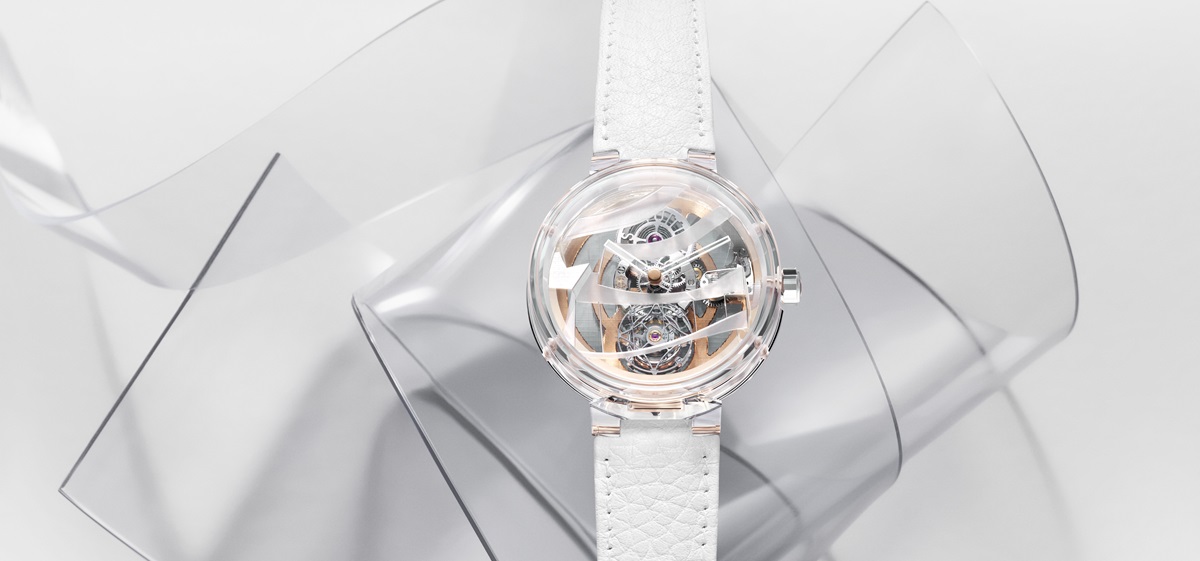
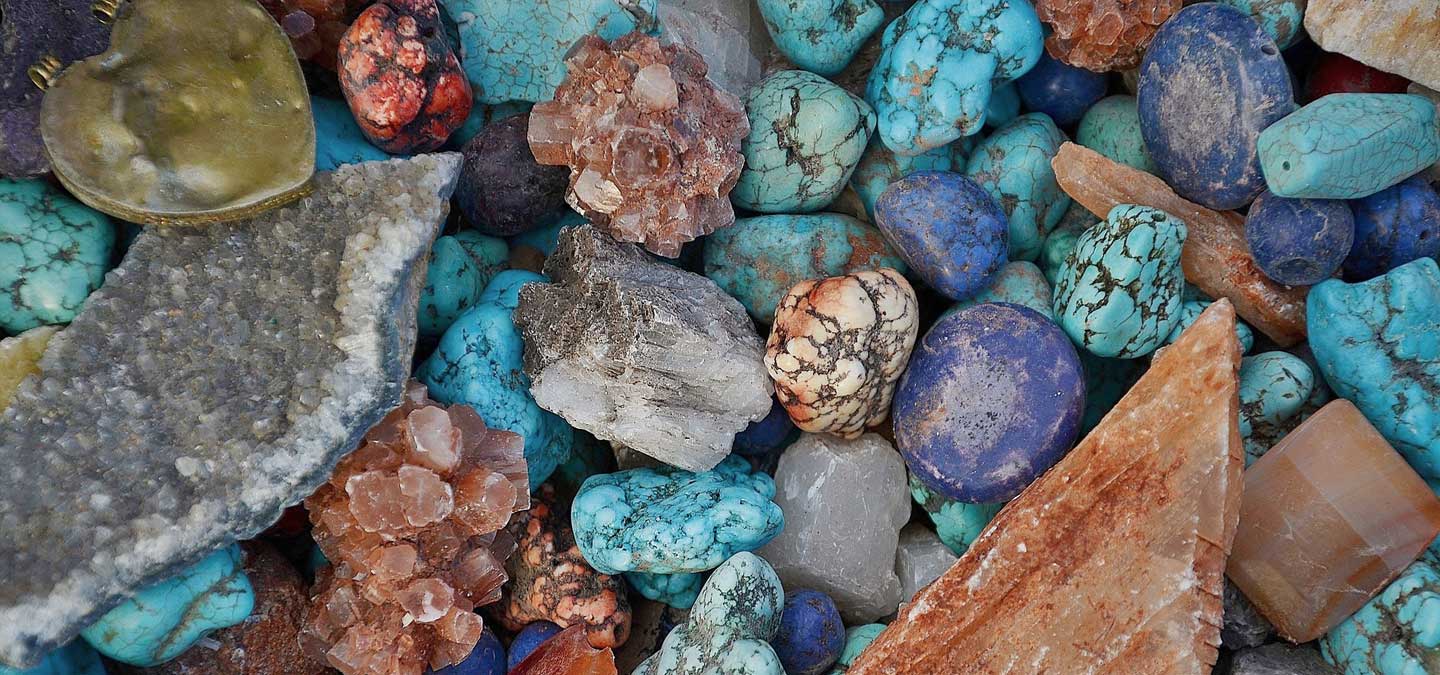




Show Comments +